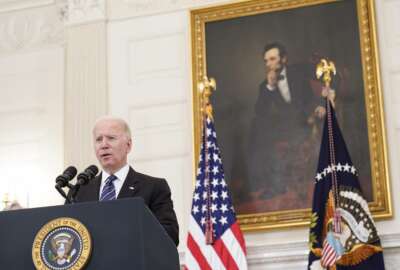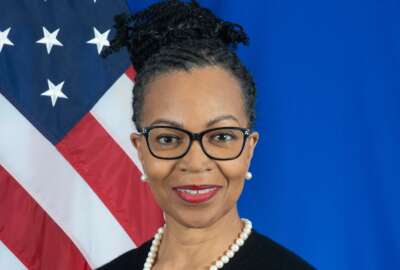How agencies are tackling Biden’s new diversity and inclusion order
The Office of Personnel Management is developing an assessment tool for agencies, designed to help them evaluate the current state of their diversity, equity,...
Agencies have an extensive to-do list under the Biden administration’s recent diversity and inclusion executive order, which the president signed last month.
To guide them, the Office of Personnel Management is developing a new assessment tool, which will help agencies evaluate the current state of their diversity, equity, inclusion and accessibility efforts, a key requirement of the executive order.
“This is really critical, because while we know many of the top agencies are already doing this, there isn’t necessarily a uniform strategy or standard for how we evaluate DEIA and how we benchmark it,” Mini Timmaraju, a senior adviser to the OPM director on diversity, equity, inclusion and accessibility, said Tuesday at a virtual event hosted by GovExec. “Therefore, we have challenges really showing successes and reevaluating where we have missteps.”
Under the new executive order, agencies are supposed to measure demographic representation inside their organizations and track trends on employment applications, hiring decisions, attrition, professional development and the composition of senior leader workforces.
OPM, along with the Office of Management and Budget and Equal Employment Opportunity Commission, will explore how government can collect more demographic data on the federal workforce, particularly information that it’s never been gathered before.
“We know, for example, the data governmentwide shows that the biggest challenge we have is with the Senior Executive Service,” Timmaraju said. “We know that it is 70% white, 66% male. But there’s a lot we don’t know yet, because we don’t collect comprehensive data across the government. So for example, we don’t collect sexual orientation and identity data. We do not have the data to show how LGBTQ+ workers are doing in the workforce. We don’t have enough metrics on what inclusion factors are being affected here.”
Some agencies are craving for that data, and their chief diversity officers believe it’ll be crucial in order to get a better picture of how the federal workforce is feeling — and what drives them to leave public service.
“To be perfectly frank, the law is not helpful at putting in place remedies for what we know are underrepresented populations, except for those with disabilities where you are indeed allowed to set targets, some might say quotas, or set goals in a more defined way,” said Ambassador Gina Abercrombie-Winstanley, chief diversity and inclusion officer for the State Department.
Agencies, for example, can ask their employees individually to update their personnel profiles with more detailed information about their sexual orientation or national origin, but the government as a whole generally hasn’t collected that information.
“Are there unique challenges for inclusion for women of color? All of us who are women of color would say absolutely,” Timmaraju said. “But I need the data to quantify exactly what that is, and I need it to correspond to the survey analysis we get through the Federal Employee Viewpoint Survey and other instruments to really show and persuade our leadership that there are culture changes we need to make happen together.”
A systematic, governmentwide effort to gather such data in a uniform way would be helpful, said Rita Sampson, chief of equal employment opportunity and diversity at the Office of the Director of National Intelligence.
At the same time, agencies can’t ignore qualitative data, either, she added.
ODNI conducted a workforce needs survey a few years ago, Sampson said. The feedback showed intelligence community leaders they needed to focus on micro-aggressions and stereotypes within the workforce, and it inspired the IC’s “small steps to inclusion” initiative.
The program encourages employees to focus on efforts they can take individually, and it’s part of the intelligence community’s three-year diversity and inclusion strategic plan, which it launched back in 2020.
“This whole notion of diversity, equity and inclusion does not happen simply because there is a policy in place, but it happens because individuals take it upon themselves to lead change both internally within themselves and in relation to one another in organizations,” Sampson said of the small steps campaign.
Individually, other agencies are knee-deep in their own diversity and inclusion efforts.
The State Department intends to finalize its diversity and inclusion strategic plan this summer, an effort that started under the previous administration.
“We would like to make it more concrete. It has a lot of really good stuff in there, but not a lot of things in there, from our perspective now, that will bring about measurable change,” Abercrombie-Winstanley said. “This office is about measurable change. We are looking at how to hold ourselves accountable. I’ve had the lawyers caution me about even using the word ‘accountable.’ But we must be in order to see progress. There are no quotas, no quotas, no quotas, not even goals. [There are] results [and] progress.”
State, which installed Abercrombie-Winstanley as its chief diversity and inclusion officer earlier this year, is exploring how it can better hold senior leaders accountable.
“When we have senior leaders who do things that make the feeling of being inclusive, valued and respected fleeting for employees, how do we hold them to account, in a positive way, as well as a negative way? ‘Negative’ meaning, you’re not going to get another senior position if you are not a good manager of all of your staff, but also in a positive way,” Abercrombie-Winstanley said. “If we see that you are an advocate for [and] an activist for inclusion, in supporting, in mentoring, etc., then you’re going to get bigger and more responsibilities.”
The department is embedding those ideas in the performance standards for its Foreign Service officers.
It’s for those reasons that the Biden administration sees the Senior Executive Service as prime ground for its diversity and inclusion efforts. Creating change within the SES should drive further cultural shifts within the agencies, Timmaraju said.
OPM itself recently elevated its own diversity and inclusion organization, and is searching for a new senior executive to lead the office and report directly to the agency’s director.
“We reinvigorated our internal D&I council,” Timmaraju said. “We started doing regular listening sessions with our ERGs, our affinity organizations, making sure they’re on various panels and parts of policy committees. We started reevaluating and inserting DEI efforts into our performance evaluation work, our strategic planning and now our budget. These are all really core things that every agency can do in anticipation of getting ready for the EO.”
Copyright © 2025 Federal News Network. All rights reserved. This website is not intended for users located within the European Economic Area.
Nicole Ogrysko is a reporter for Federal News Network focusing on the federal workforce and federal pay and benefits.
Follow @nogryskoWFED






